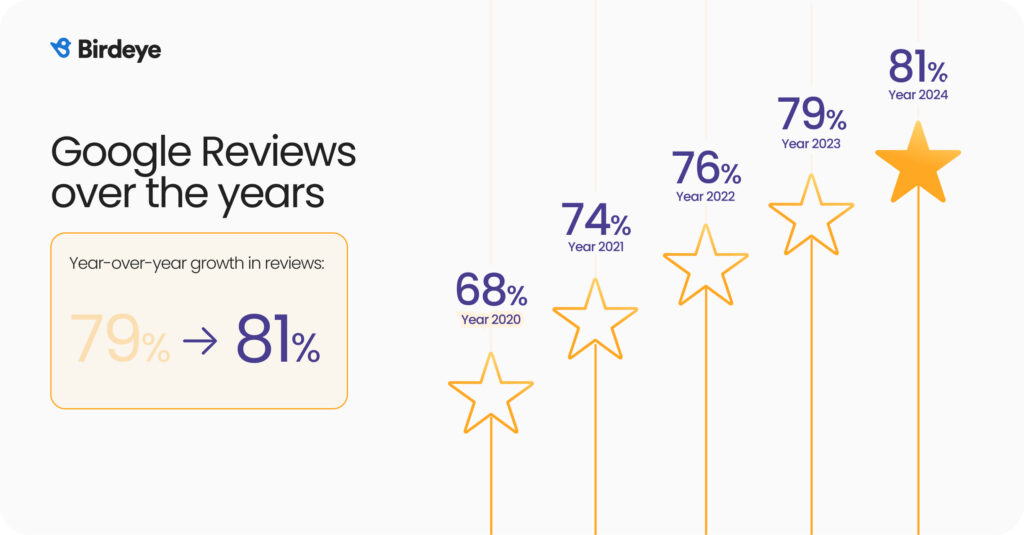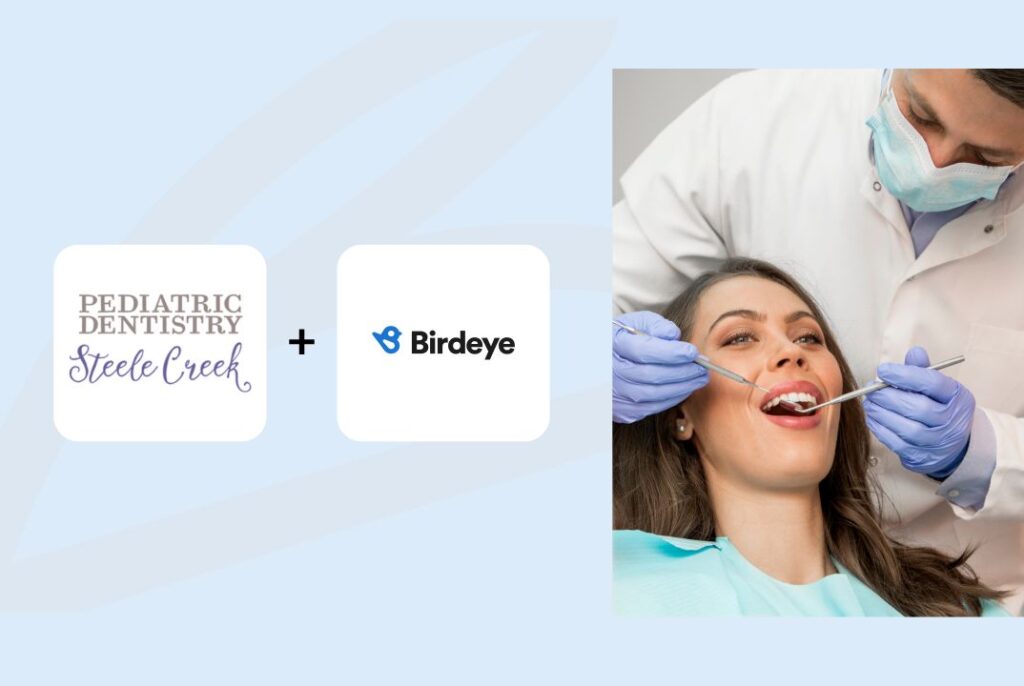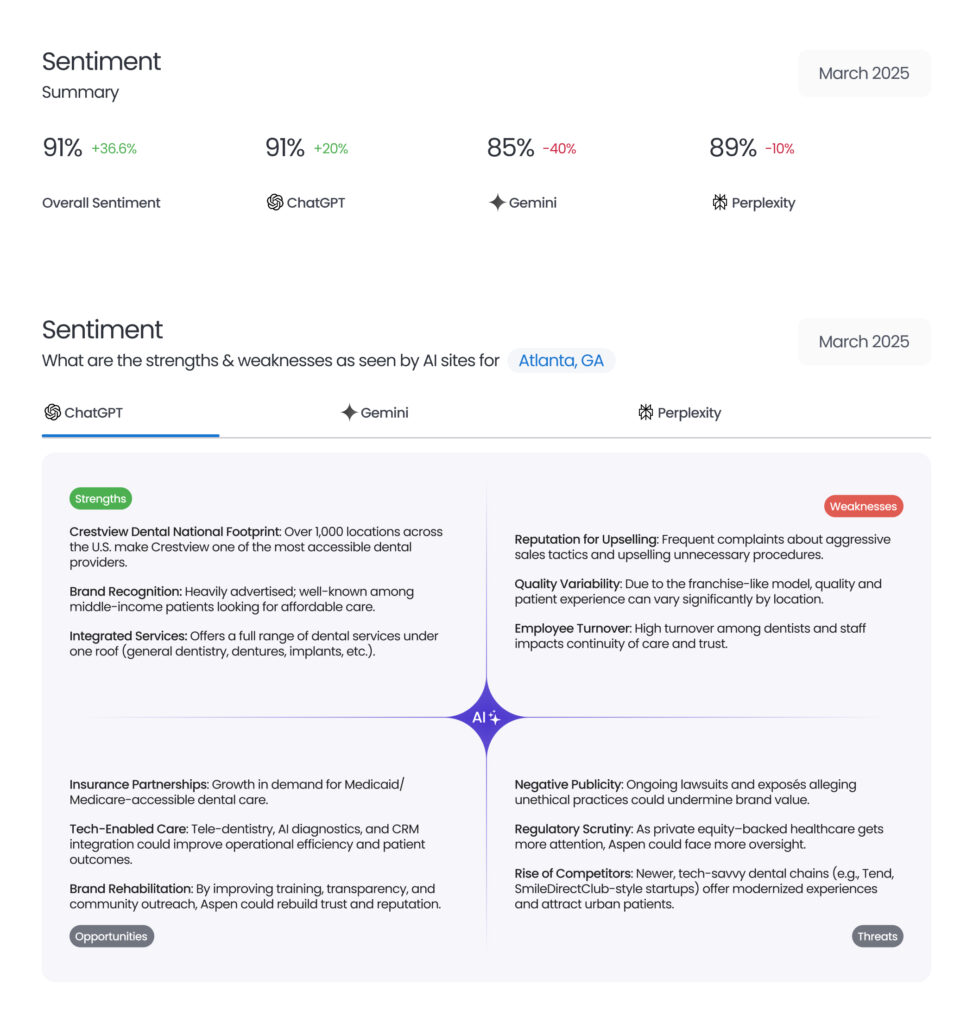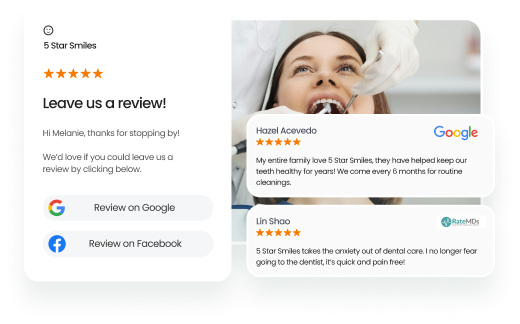A new dental patient chooses a clinic that offers clarity, convenience, and confidence, from the first online search to the moment they sit in the treatment room. Consistent follow-ups and post-treatment care then turn that first visit into lasting trust and loyalty.
Summary
To attract and retain new patients, your dental health practice must win on visibility and experience. Visibility comes from search, reviews, and local content that AI can understand. Experience starts when a patient books their first appointment and continues through clear communication, a calm first visit, and a transparent treatment plan that drives acceptance and ROI.
Read on to learn how to attract new patients to your dental practice, script a stress-free first visit, present treatment plans patients accept, and measure ROI so your growth compounds.
Table of contents
- What is the new dental patient journey, and how does it drive growth?
- How to attract new patients to your dental practice with AI-ready content
- What should a high-converting dental website include for a new dental patient?
- What should a new dental patient expect at the first appointment?
- Deliver a complete new patient dental examination
- Present a treatment plan that earns consent
- How do reviews influence decisions and search visibility?
- How Birdeye turned happy patients into 2x more new appointments for Steele Creek Pediatric
- Scripting calm: The nervous patient protocol to de-escalate dental anxiety
- Beyond the click: How to calculate ROI and lifetime value (LTV) from AI-referred patients
- Protecting patient data: A practical HIPAA and AI compliance checklist
- A 30-day action plan to improve every new dental patient experience
- What metrics prove your new dental patient engine is working?
- How Birdeye turns every new dental patient into a lasting relationship
- FAQs for new dental patients
- Conclusion: Build a memorable first experience, and watch your growth scale
What is the new dental patient journey, and how does it drive growth?
The new dental patient journey starts with a search and builds toward loyalty. It connects each step of discovery, such as website visit, online booking, intake, treatment, and follow-up, to remove friction. Clear information and fast scheduling turn clicks into appointments. A calm first visit and a transparent plan increase case acceptance, while reminders and easy payment options reduce no-shows.
That continuity powers growth. More completed bookings raise chair fill. Higher acceptance increases production per patient. Recalls, check-ins, and ask-for-review moments boost retention, reviews, and referrals. The result is a steady loop of new patients, a stronger reputation, and a higher lifetime value.
Stages to map and improve
- Discovery: Optimize your Google Business Profile, collect reviews, share social proof (dental social media content), improve referrals, and local search
- Consideration: Ensure your website clearly communicates services, insurance, payment options, and the practice’s unique value.
- Conversion: Simplify online scheduling, send automated reminders, and confirm details before the first visit to reduce no-shows.
- Care: Deliver a smooth in-office experience- from friendly check-in to thorough exams, cleanings, and screenings.
- Plan: Present a transparent treatment plan with cost estimates and timelines for needed treatment
- Retention: Maintain engagement with personalized follow-ups, recall reminders, oral health education, and review requests.
Quick tip: Create a one-page journey map for the entire dental team to review weekly. Add real patient questions from phone logs to keep it current.
How to attract new patients to your dental practice with AI-ready content
Search behavior has evolved; patients no longer type short keywords like “dental clinic near me.” They now ask conversational questions such as “best family dentist in London who offers same-day appointments.” To show up in these AI-driven answers, your content needs to be answer-ready, not just rank-ready.
Create question-based pages with short, structured responses that AI systems can summarize confidently. Build one page for each dental service and one for each location, and include FAQs written in natural, conversational language. Think about what real patients ask, what happens at a first dental appointment, whether X-rays are required, or how dental insurance is handled.
Alongside strong content, it’s crucial to understand how your practice is represented across AI platforms. Tools like Birdeye Search AI help you see how ChatGPT, Gemini, and Perplexity describe your business, which sources they reference, and where essential details are missing. This lets you identify and correct inconsistencies, ensuring your practice appears accurately in AI-generated answers that shape patient decisions.
Checklist to win visibility:
- Add FAQ, HowTo, and LocalBusiness schema to your service and location pages.
- Publish a patient form hub with guidance on medical history, insurance cards, and first-visit preparation.
- Write plain-English explainers for gum disease, oral cancer screening, and routine cleanings, short, scannable, and factual.
- Create one page per service and one page per location with consistent NAP, hours, and insurance details.
- Add FAQs that match how patients talk (e.g., “What happens during my first dental appointment?” “Are X-rays required for new patients?”).
- Internally link pages so visitors can move from problem to service to booking in two clicks.
- Run an AI discovery audit monthly using Birdeye Search AI to review how your practice is described across AI engines, fix citation gaps, and keep your business AI-visible and patient-ready.

What should a high-converting dental website include for a new dental patient?
Make booking obvious, trust immediate, and pricing understandable. Use short paragraphs, clear headings, and action buttons that appear on every page.
Essentials
- Online scheduling: Include appointment buttons in the header and footer
- Mobile-first design: Fast loads, readable text, and forms that are easy to fill
- Trust signals: Team photos, doctor bios, memberships, and real patient testimonials
- Pricing clarity: Explain payment options, affordable care programs, and financing options
- Insurance guidance: A page that lists accepted plans, benefits checks, and coverage notes
- Education: Short pages that explain dental exam steps and what to expect in the treatment room
Microcopy you can use
- We explain the cost before any dental work
- Ask about monthly plans that make care affordable
- Bring your insurance cards, and we will confirm benefits
You can also add a sticky footer button that says “Book appointment” so a new dental patient can schedule from any page.
What should a new dental patient expect at the first appointment?
The first appointment should feel calm and organized. Greet by name, confirm patient paperwork, review medical history and dental history, explain the visit flow, and offer comfort choices. Then begin the clinical portion.
Smooth check-in sequence
- Reception area: Verify forms and insurance coverage, answer questions
- Health review: Confirm medications, allergies, and prior dental work
- Orientation: Show the treatment room and explain the steps
- Comfort menu: Headphones, pillow, sunglasses, or a stress ball
- Clinical handoff: Dental hygienist begins cleaning and screening
Dental clinics can use a two-minute welcome script at the front desk that sets expectations and offers immediate comfort choices.
Deliver a complete new patient dental examination
A complete dental exam assesses your teeth and gums, takes dental X-rays when indicated, evaluates bite, and includes an oral cancer screening. The goal is to determine current oral health and develop a personalized treatment plan.
Standard components
- Dental X-rays and photos to assess decay, bone levels, and prior dental work
- Gum disease assessment with pocket measurements and bleeding index
- Oral cancer screening using a systematic visual and tactile approach
- Bite and function review to spot wear or joint concerns
- Doctor consult that links findings to daily habits and goals
Quick Tip: Give every new patient a one-page summary that lists findings, photos, and next steps. Example: “Your back molar has a cracked filling. A crown will protect the tooth and prevent a fracture. Here are the photos and the estimate with your insurance applied.”
Present a treatment plan that earns consent
How do you present a treatment plan that patients accept? Well, you can keep the plan short, visual, and specific. Show photos, name the problem, outline treatment options, present the costs and timing, and schedule the next step before the patient leaves.
One-page plan format
- Problem: Deep cavity on tooth 19
- Recommended treatment: Composite filling
- Why now: Waiting could require more complex treatment
- Cost and insurance: Estimated patient portion shown clearly
- Timing: Book follow-up appointments while the patient is present
- Questions: Invite discussion and prioritize by urgency if needed
Acceptance boosters
- Photos on the printout
- Clear payment options with interest-free choices where available
- Phased care for affordability without delaying an important part of the plan.
Moreover, add a small “phased care” box that shows what to do first, second, and third based on urgency and budget.
How do reviews influence decisions and search visibility?
Reviews prove your dental practice delivers real results and great service, shaping both local visibility and patient choice. The trend is accelerating: from 2024 to 2025, the overall share of reviews rose from 79% to 81%, showing how much more weight patients place on online feedback today.
As reviews accumulate, visibility compounds, leading to more discovery and bookings. Birdeye helps practices capture and sustain that momentum and has been top-rated on G2 for 27 consecutive quarters in Online Reputation Management (Spring 2019–Fall 2025).

Operational habits
- Automate requests by SMS and email after each appointment.
- Respond to every review within 24 hours.
- Highlight common themes in morning huddles to help your dental team improve.
Quick tip: Use a two-line response template. Line one thanks the reviewer with a detail. Line two invites them to call if they need anything else.
Also, Birdeye’s analysis shows that one new review can drive around 600 additional searches for your business.

How Birdeye turned happy patients into 2x more new appointments for Steele Creek Pediatric

The brand
Steele Creek Pediatric Dentistry is a three-location pediatric dental practice with five pediatric dental specialists who care for children and patients with special needs.
The challenge
Despite great experiences, the practice had just under 177 total reviews across Google and Facebook. The online story did not match real outcomes, so prospective patients could miss them during research for a first visit.
The result
Steele Creek integrated Birdeye Reviews AI with DoxPedo, so every appointment triggered a review request. All three locations now show more than 700 total reviews, and new patient volume has more than doubled. With Birdeye Insights AI, Dr. Goodman tracks the topics patients mention most and adjusts operations if a location underperforms. This loop makes quality easy to see and easy to choose.

“Since using Birdeye our new patient numbers have continued to grow, from the increased number of Google and Facebook reviews, to the ability to communicate with prospective clients via SMS 24/7 to the automated asking for referrals from existing clients. This allows happy clients to recommend us to their friends and family via sms and email, the modern day word of mouth marketing.”
-Adam Thorne, Harley Street Dental Studio
Learn more about Birdeye and Steele Creek Pediatric Dentistry case study
Scripting calm: The nervous patient protocol to de-escalate dental anxiety
Train your team in simple, non-pharmacological techniques that lower stress fast. A good protocol pairs clear scripts with breathing and distraction methods that fit the treatment room.
Five-step protocol
1. Name and normalize
Script: “Hi Mila, I can see this feels stressful. It’s ok, many patients feel that way at a first appointment. We will take it one step at a time, and I will explain everything before it happens.”
2. Breathing reset
Technique: Ask the patient to try four slow nasal breaths with eyes open. Count in for four and out for six. Repeat twice.
3. Choice and control
Script: “If you raise your left hand, we pause. Would you like music or a neck pillow.”
4. Narrate and preview
Script: “You will feel gentle pressure as I check your gums. This takes about one minute. If anything feels sharp, I stop and adjust.”
5. Positive closure
Script: “You did well. Here is a quick summary of what we found and the first step to protect your teeth.”
Team training tips
-Practice the scripts in morning huddles
-Place headphones and comfort items in every treatment room
-Add a calm card to the tray with the five steps.
Beyond the click: How to calculate ROI and lifetime value (LTV) from AI-referred patients
Measure cost per booked appointment and lifetime value by source. Compare AI Overview referrals to traditional clicks using simple formulas and a monthly review cadence.
Core formulas include:
- Cost per booked appointment: Marketing cost from the source divided by the number of new patient appointments from that source
- Acceptance rate: Number of new patients who accept needed treatment divided by total new patients
- Average first year value: Average revenue from exam, X-rays, cleaning, and accepted treatment in the first 12 months
- Lifetime value: Average first-year value multiplied by expected years retained
- ROI: Lifetime value minus acquisition cost, divided by acquisition cost
Based on the points above, some of the practical examples include:
1. AI Overview source sends the 30 first visits
2. 60 percent accept at least one recommended treatment
3. The average first-year value is 950 dollars
4. Average retention is four years
5. Lifetime value is 3,800 dollars per patient
6. If the acquisition cost per patient is 120 dollars, the ROI is positive and scalable.
Pro tip: Add a “source” field to patient paperwork and your PMS so the front desk can tag AI referrals at booking and the doctor can view lifetime value (LTV) by source.
Protecting patient data: A practical HIPAA and AI compliance checklist
Treat every tool that stores or processes patient information as part of your HIPAA risk profile. Keep protected health information out of non-compliant tools and document business associate agreements.
Audit your tech stack
- Inventory: Every system that holds PHI, including phones, forms, analytics, review tools, AI tools, and messaging
- BAAs: Ensure business associate agreements with vendors that access PHI
- Data flow: Map how PHI moves from the patient form to the EHR to follow-up messaging
- Access control: Use role-based permissions and two-factor authentication
- AI usage: Do not paste PHI into general-purpose AI tools without a compliant instance
- Retention and deletion: Follow written policies for data retention and the right to delete where required
- Employee training: Teach staff what counts as PHI and how to avoid accidental disclosure in public replies, such as dental reviews and messages.
Pro tip: Use privacy-safe templates for public responses. Example: Thank you for your feedback. Please call our office so we can discuss your visit privately.
From first hello to forever care.
Want to see the impact of Birdeye on your business? Watch the Free Demo Now.
A 30-day action plan to improve every new dental patient experience
1st Week: Visibility and access
- Add service and location pages with FAQs.
- Place a “Book appointment” on every page.
- Publish a patient paperwork hub and medical history guide.
2nd Week: Reputation and proof
- Turn on automated review requests by text and email.
- Respond to every review within 24 hours.
- Add review widgets and doctor bios to service pages.
3rd Week: Clinical readiness
- Standardize the full exam template with oral cancer screening.
- Align photo protocols for case presentation.
- Prepare one-page treatment plan handouts.
4th Week: Finances and follow-ups
- Publish clear payment and financing options.
- Train staff to present phased plans for affordable care.
- Set reminders for follow-up appointments and unfinished treatment.
Before you start, set your metrics, access, acceptance, experience, and source mix by channel, so you can see what’s working and improve faster.
What metrics prove your new dental patient engine is working?
To truly understand whether your dental health marketing efforts are paying off, track more than just new appointments. Look at patient access, treatment acceptance, and overall experience across every channel. Review which sources drive the highest-quality leads, monitor lifetime value, and measure satisfaction at each touchpoint.
Core metrics include:
- New patient calls, forms, and online bookings
- Review count, rating, and response time
- Case acceptance rate from first visits
- No-show rate and days to next appointment
- Referral volume and source mix
- LTV and cost per booked appointment by source
Team huddle prompts
- What slowed today’s check-in
- Which top three questions need new website answers
- Which patients need a phone call to finish scheduling
When dentists and practice managers regularly discuss these metrics, they gain the clarity to move forward with confidence, investing time and resources where they deliver real, long-term growth.
How Birdeye turns every new dental patient into a lasting relationship
Attracting a new dental patient is only half the battle; keeping them coming back is where real growth begins. Birdeye helps dental practices master both. From first search to post-visit follow-up, every touchpoint is on-brand, compliant, and measurable.
Here’s where Birdeye makes the difference
- Birdeye Review generation agent chooses SMS or email and the best send time, personalizes outreach in your voice, and nudges politely, so happy visits turn into credible social proof.
- Birdeye Review response agent reads sentiment and context (even images) to craft thoughtful, compliant replies; flags sensitive feedback for human approval.
- Birdeye Social publishing agent ideates, drafts, schedules, and publishes content that highlights pediatric care, orthodontics, implants, learning from top posts, and local benchmarks.
- Birdeye Messaging automations agent acknowledges instantly via SMS, Google, Facebook, and webchat; routes by topic (new patient inquiries, insurance, emergencies) and triggers tailored follow-ups.
- Birdeye Contact segmentation agent builds precise audiences from plain-English prompts (e.g., “patients who missed hygiene recall,” “consults without treatment acceptance,” or “patient not visited in last 6 months”).

- Birdeye Search AI agent improves how you appear in AI discovery (ChatGPT, Gemini) by spotting sentiment, citation gaps, and mislabels, then giving your team a prioritized fix list.
- Birdeye Insights AI agent turns reviews and surveys into action, surfacing themes like wait times, front-desk experience, and provider communication to lift satisfaction and rebookings.

The outcome: more first-time appointments, higher treatment acceptance, and loyal families who come back and refer because their experience is seamless from click to clinic.
FAQs for new dental patients
You complete patient paperwork, review medical history and dental history, take dental X-rays if needed, and perform a complete dental exam with an oral cancer screening. The dental hygienist performs a cleaning, and the dentist explains findings and a simple treatment plan.
No. The team recommends X-rays based on age, symptoms, and risk. If you have recent images from another clinic, bring them so the dental team can decide whether new photos are required.
You receive a written estimate that shows insurance benefits and your estimated portion. The office explains payment options and financing options, and can phase treatment so you address the most critical part first.
The dentist and hygienist inspect the lips, cheeks, tongue, floor of the mouth, and throat, and feel the tissues for changes. The screening is quick and is an essential part of preventive oral health.
Your team can guide a short breathing exercise, narrate each step, and pause on request. Ask for comfort choices like headphones or a blanket. These simple techniques lower stress and help you focus on your plan.
Track new bookings, review volume and response time, case acceptance, no-show rate, and lifetime value by source. Use these metrics to improve scheduling, communication, and treatment presentation.
Conclusion: Build a memorable first experience, and watch your growth scale
A new dental patient wants clarity, care, and confidence. Deliver simple scheduling, a calm first visit, a thorough exam, and a transparent treatment plan, then let reviews amplify that experience for the next family searching nearby.
Pair strong dental reputation systems with anxiety-aware communication, same-day capabilities where appropriate, and a clear privacy posture. Do this consistently, and you’ll see it in higher acceptance, more referrals, and stronger retention.
Ready to turn first visits into lasting relationships? Request a Birdeye demo and see how our Agentic marketing platform drives new dental patient growth end to end. Watch now.

Originally published









